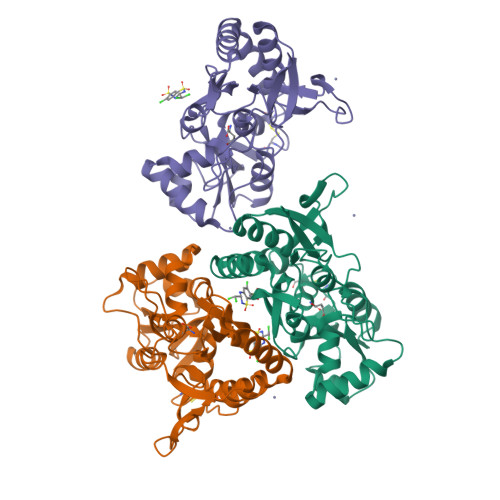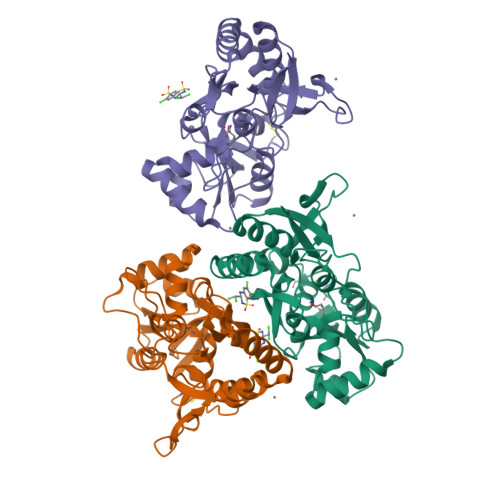Probing the allosteric modulator binding site of GluR2 with thiazide derivatives
Ptak, C.P., Ahmed, A.H., Oswald, R.E.(2009) Biochemistry 48: 8594-8602
- PubMed: 19673491
- DOI: https://doi.org/10.1021/bi901127s
- Primary Citation of Related Structures:
3IJO, 3IJX, 3IK6, 3IL1, 3ILT, 3ILU - PubMed Abstract:
Ionotropic glutamate receptors mediate the majority of vertebrate excitatory synaptic transmission and are therapeutic targets for cognitive enhancement and treatment of schizophrenia. The binding domains of these tetrameric receptors consist of two dimers, and the dissociation of the dimer interface of the ligand-binding domain leads to desensitization in the continued presence of agonist. Positive allosteric modulators act by strengthening the dimer interface and reducing the level of desensitization, thereby increasing steady-state activation. Removing the desensitized state for simplified analysis of receptor activation is commonly achieved using cyclothiazide (CTZ), the most potent modulator of the benzothiadiazide class, with the flip form of the AMPA receptor subtype. IDRA-21, the first benzothiadiazide to have an effect in behavioral tests, is an important lead compound in clinical trials for cognitive enhancement as it can cross the blood-brain barrier. Intermediate structures between CTZ and IDRA-21 show reduced potency, suggesting that these two compounds have different contact points associated with binding. To understand how benzothiadiazides bind to the pocket bridging the dimer interface, we generated a series of crystal structures of the GluR2 ligand-binding domain complexed with benzothiadiazide derivatives (IDRA-21, hydroflumethiazide, hydrochlorothiazide, chlorothiazide, trichlormethiazide, and althiazide) for comparison with an existing structure for cyclothiazide. The structures detail how changes in the substituents at the 3- and 7-positions of the hydrobenzothiadiazide ring shift the orientation of the drug in the binding site and, in some cases, change the stoichiometry of binding. All derivatives maintain a hydrogen bond with the Ser754 hydroxyl, affirming the partial selectivity of the benzothiadiazides for the flip form of AMPA receptors.
Organizational Affiliation:
Department of Molecular Medicine, Cornell University, Ithaca, New York 14853, USA.





















